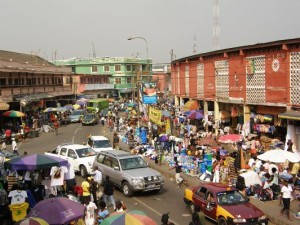S&P Ratings downgrades Ghana to junk status
 Credit ratings agency, S&P Global Ratings has downgraded Ghana’s debt further into speculative territory, lowering the country’s foreign and local currency sovereign ratings to junk from B-/B to CCC+/C with negative outlook.
Credit ratings agency, S&P Global Ratings has downgraded Ghana’s debt further into speculative territory, lowering the country’s foreign and local currency sovereign ratings to junk from B-/B to CCC+/C with negative outlook.
In February Moody’s downgraded Ghana to Caa1 with a stable outlook.
According to S&P Ghana’s outlook is negative, “reflecting Ghana’s limited commercial financing options, and constrained external and fiscal buffers.”
S&P C downgrade means currently the country is vulnerable to nonpayment and dependent on favorable business, financial and economic conditions.
The ratings agency however indicated that the COVID-19 pandemic and the conflict in Russia have magnified Ghana’s fiscal and external imbalances.
“Demand for foreign currency has been driven higher by several factors, including nonresident outflows from domestic government bond markets, dividend payments to foreign investors and higher costs for refined petroleum products” it said.
S&P adds that Ghana’s inability to access Eurobond markets has affected the economy.
The country’s debt stock is almost 80 per cent.
According to the Bank of Ghana, the country’s public debt has increased to 78.3 per cent of GDP (GH¢393.4 billion) at the end of June 2022, compared with 76.6 per cent of GDP (GH¢351.8 billion) at the end of December 2021. Of the total debt stock, domestic debt was GH¢190.1 billion (37.8 percent of GDP), while the external debt was GH¢203.4 billion (40.5 per cent of GDP).
In April 2015 when the International Monetary Fund (IMF) approved a $918 million facility for Ghana, it classified the country as ‘high risk of debt distress’, which means the country is not in a position to service its debts. The IMF facility initiated a programme to manage the country’s economy and to control government spending to ensure fiscal discipline. But the government hurriedly left the programme.
It has been established that in 10 years from 2011 to 2020 the country has used Petroleum Revenues to service debt by spending 74 per cent of withdrawals made from the Ghana Stabilisation Fund on debt repayment.
The 2022 African Economic Outlook found that high public debt is threatening recovery efforts in Africa and hindering the prospects of high and sustainable economic growth.
The report by the African Development Bank (AfDB) also noted that although Africa’s debt-to-gross GDP ratio is estimated to stabilise around 70 per cent in 2021 and 2022, from 71.4 per cent in 2020, it will remain above pre-pandemic levels, and this is despite growth recovery and debt relief initiatives such as the Debt Service Suspension Initiative (DSSI), the Common Framework, and the International Monetary Fund’s general allocation of $650 billion equivalent in Special Drawing Rights (SDRs).
According to the report, even though these initiatives have helped alleviate liquidity pressures in many countries by boosting external buffers, they have not erased debt vulnerabilities as 23 African countries including Ghana were either in or at risk of debt distress as of February 2022.
By Emmanuel K Dogbevi
Copyright ©2022 by NewsBridge Africa
All rights reserved. This article or any portion thereof may not be reproduced or used in any manner whatsoever without the express written permission of the publisher except for the use of brief quotations in reviews.
